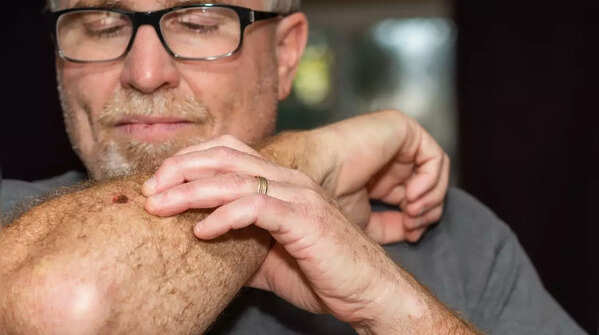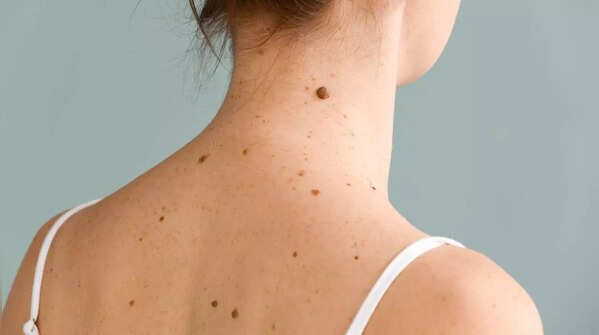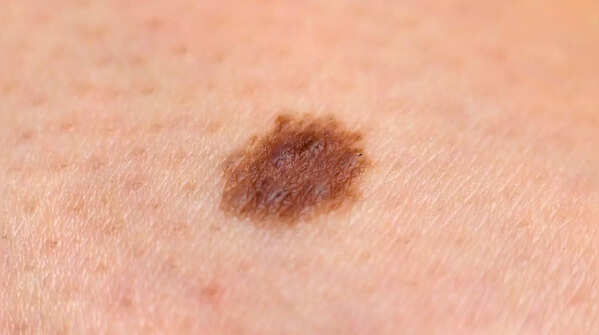Skin cancer's prevalence worldwide often begins subtly, perhaps as an overlooked new mole or minor skin change. However, early detection dramatically improves treatment outcomes. Recognizing potentially cancerous spots is therefore crucial. New growths, unusual moles, or persistent sores all warrant attention. Here's expert advice on identifying early signs of skin cancer and knowing when to seek medical advice.

The ABCDE method is a valuable tool for detecting melanoma, a serious form of skin cancer. Each letter represents a characteristic to watch for:
Any mole displaying these signs requires prompt evaluation by a dermatologist.

Persistent skin sores or scabs that repeatedly heal and reappear, or simply refuse to heal, can indicate basal or squamous cell carcinoma. These sores often manifest as pink, red, or slightly scaly patches and may bleed or ooze. A sore lasting longer than three weeks or recurring in the same location shouldn't be ignored. Particularly on the face, arms, or scalp, these persistent wounds demand medical examination, as they could be a subtle indicator of skin cancer.

Typically, moles are painless and stable. However, a mole that begins to itch, becomes tender, bleeds, or develops a crust warrants serious attention, as it could signal skin cancer. These symptoms often point to inflammation or structural skin changes, potentially indicating a more serious issue than a normal mole. Consulting a skin specialist is always advisable when such changes occur.

Skin cancers don't always arise from existing moles. They can also develop from new growths, such as small lumps, shiny bumps, or rough patches, particularly in sun-exposed areas. Prompt consultation with a skin specialist is crucial for evaluating any such new developments.

If the color of a mole abruptly changes or spreads into the surrounding skin, or if the mole develops fading edges, it could be a sign of melanoma. This irregular pigment spread suggests the mole may be growing deeper or wider, necessitating serious consideration. Regular mole comparison over time, aided by photos, can help detect changes indicative of skin cancer. Dermatological evaluation is recommended if such changes are observed.

Newer articles
Older articles
 Team India Settles in Birmingham: Rahul's Mattress, Coaches' Strolls, and the Enduring Coffee Ritual
Team India Settles in Birmingham: Rahul's Mattress, Coaches' Strolls, and the Enduring Coffee Ritual
 Android Users Urged to Patch Devices Immediately Following Critical Security Flaws Alert
Android Users Urged to Patch Devices Immediately Following Critical Security Flaws Alert
 Ashada Gupt Navratri 2025: Dates, Auspicious Timings, and Esoteric Significance Explained
Ashada Gupt Navratri 2025: Dates, Auspicious Timings, and Esoteric Significance Explained
 JPG to PDF: A Graphic Designer's Guide to Conversion & Best Practices
JPG to PDF: A Graphic Designer's Guide to Conversion & Best Practices
 Skin Cancer Alert: How to Identify Suspicious Moles and Early Warning Signs
Skin Cancer Alert: How to Identify Suspicious Moles and Early Warning Signs
 IRCTC's AskDisha 2.0: AI Chatbot Streamlines Train Ticket Booking, Refunds, and Travel Information
IRCTC's AskDisha 2.0: AI Chatbot Streamlines Train Ticket Booking, Refunds, and Travel Information
 The stat that could swing every NBA team's 2025-26 season
The stat that could swing every NBA team's 2025-26 season
 Bollywood's Mythological Muse: How Indian Epics Inspire Cinematic Storytelling
Bollywood's Mythological Muse: How Indian Epics Inspire Cinematic Storytelling
 Bollywood Flashback: Jackie Shroff Accused of Untoward Advance on Young Tabu at Danny Denzongpa's Party
Bollywood Flashback: Jackie Shroff Accused of Untoward Advance on Young Tabu at Danny Denzongpa's Party
 Popular Finance YouTuber's Account Hacked: Bitcoin Scam Alert and Security Tips
Popular Finance YouTuber's Account Hacked: Bitcoin Scam Alert and Security Tips